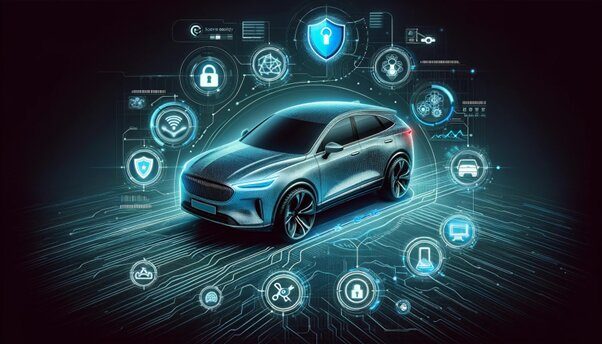Table of Contents
ToggleWhat is Automotive Cybersecurity?
Automotive cybersecurity refers to the protection of a vehicle’s digital systems, networks, and data from cyberattacks or unauthorized access. These systems include everything from infotainment and navigation systems to safety-critical components such as braking, steering, and engine control systems.
As vehicles become more connected and autonomous, their attack surface expands, providing opportunities for hackers to infiltrate vehicle systems, steal personal data, or even remotely control critical functions. The goal of https://squeelee .com/ is to protect against these vulnerabilities and ensure the safety, privacy, and integrity of both the driver and the vehicle.
The Growing Threat of Cyberattacks in the Automotive Industry
With the increasing adoption of connected and autonomous vehicles, the potential for cyber threats has grown exponentially. Here are some of the key risks associated with cyberattacks on modern vehicles:
1. Remote Hacking and Control
Modern vehicles are equipped with numerous digital components and communication systems, including telematics systems, infotainment systems, wireless key fobs, and even vehicle-to-vehicle (V2V) communication. Hackers could potentially exploit these systems to gain remote access to the car and take control of critical functions, such as braking, steering, or acceleration.
Famous case example: In 2015, cybersecurity researchers were able to hack into a Jeep Cherokee remotely and control its engine, brakes, and air conditioning, all while the vehicle was on the highway. This exposed a significant vulnerability in automotive systems and highlighted the need for stronger security measures.
2. Data Breaches and Privacy Violations
As cars become increasingly connected, they gather vast amounts of data about the driver’s habits, location, and personal preferences. This data is often stored in the cloud or shared with third-party services, making it vulnerable to breaches. Cybercriminals could target these systems to access sensitive information, including personal data, location tracking, and even vehicle diagnostics.
For example, a data breach could lead to the exposure of a driver’s exact location or travel history, opening the door for identity theft or stalking.
3. Ransomware Attacks
Ransomware attacks involve hackers locking down a vehicle’s systems or encrypting sensitive data and demanding payment to restore access. A ransomware attack on an automotive system could disable certain functions, such as the infotainment system, navigation, or even vehicle control, leaving drivers stranded or vulnerable.
4. Vehicle-to-Vehicle (V2V) and Vehicle-to-Infrastructure (V2I) Vulnerabilities
Connected vehicles communicate with each other and with surrounding infrastructure (such as traffic lights and road signs) as part of the vehicle-to-everything (V2X) system. While this enables more efficient and safer driving by sharing real-time data (such as traffic conditions or accident alerts), it also presents opportunities for hackers to send malicious signals that could confuse or mislead vehicles, potentially leading to accidents.
5. Software Exploits in Autonomous Vehicles
Autonomous vehicles rely heavily on software to navigate, control driving tasks, and make real-time decisions based on sensor data. If attackers can infiltrate an autonomous vehicle’s software or manipulate sensor data, they could cause the vehicle to behave unpredictably, creating a dangerous situation on the road.
Automotive Cybersecurity Technologies
To counteract the growing threats to vehicle safety and data security, automakers are implementing various cybersecurity technologies to protect their vehicles from attacks. Here are some of the most important cybersecurity solutions being used in modern vehicles:
1. Encryption and Secure Communication
To protect sensitive data transmitted between a vehicle and external systems, encryption is used to ensure that any data exchanged is secure and unreadable by unauthorized parties. Encryption is especially important in Vehicle-to-Everything (V2X) communication, where vehicles exchange data with other cars, infrastructure, and cloud systems. End-to-end encryption ensures that data remains confidential and cannot be intercepted during transmission.
2. Firewall Protection
Firewalls are used to create a barrier between a vehicle’s internal network and external networks (e.g., the internet). The firewall filters incoming and outgoing traffic to prevent unauthorized access and attacks. This technology is critical in protecting infotainment systems, telematics systems, and other connected components from malicious cyber threats.
3. Intrusion Detection and Prevention Systems (IDPS)
Intrusion Detection and Prevention Systems (IDPS) monitor the vehicle’s internal network for suspicious activity. These systems can detect unusual patterns of behavior or unauthorized access attempts and prevent them before any damage is done. By actively scanning for potential threats, IDPS helps protect against both external attacks and internal vulnerabilities.
4. Over-the-Air (OTA) Updates
Over-the-air (OTA) updates allow automakers to remotely update vehicle software, which includes security patches, bug fixes, and new features. OTA updates ensure that cybersecurity vulnerabilities can be addressed in real-time without requiring a visit to a dealership or repair shop. By continuously updating vehicle systems with the latest security patches, automakers can protect their vehicles from emerging threats.
5. Secure Boot and Hardware Security Modules (HSM)
Secure boot is a process that ensures only trusted software is loaded when a vehicle’s system starts up. It prevents malware from executing during the boot process and ensures that only verified software is allowed to run on the vehicle’s computer systems.
Hardware Security Modules (HSM) are used to protect sensitive information, such as encryption keys or authentication tokens, within a secure hardware environment. These modules are used to safeguard critical vehicle systems and ensure that malicious actors cannot tamper with or steal confidential data.
6. Biometric Authentication
To further enhance security, some automotive manufacturers are incorporating biometric authentication into their vehicles. Using fingerprint scanning or facial recognition, biometric systems can authenticate the driver and prevent unauthorized access to critical vehicle systems.
7. Redundancy and Backup Systems
To ensure the safe operation of a vehicle in the event of a cyberattack or system failure, redundancy and backup systems are essential. These systems provide alternative pathways for communication or control in case the primary systems are compromised. For example, in autonomous vehicles, redundant sensor systems (such as radar, lidar, and cameras) ensure that the vehicle can still operate safely if one sensor fails or is hacked.
Steps Automakers Are Taking to Improve Cybersecurity
Automakers are increasingly prioritizing cybersecurity to safeguard their vehicles from emerging threats. Here are some of the steps they are taking to enhance security:
1. Collaboration with Cybersecurity Experts
Many automakers are partnering with cybersecurity firms to develop robust protection for their vehicles. These collaborations help improve vehicle software security, identify vulnerabilities, and create better security protocols.
2. Security by Design
Automotive manufacturers are adopting a security-by-design approach, integrating cybersecurity into every stage of vehicle development, from design to production and testing. By proactively addressing security risks during the design process, manufacturers can better protect their vehicles from cyber threats.
3. Compliance with Global Standards
Automakers are adhering to global cybersecurity standards and regulations, such as ISO/SAE 21434, which provides guidelines for cybersecurity risk management in the automotive industry. This ensures that vehicles meet rigorous security standards and can withstand a range of potential attacks.
4. Cybersecurity Testing and Vulnerability Assessments
Manufacturers are conducting regular cybersecurity testing and vulnerability assessments to identify potential weaknesses in their vehicles’ systems. By simulating real-world cyberattacks, automakers can better understand potential vulnerabilities and strengthen their defenses.
The Road Ahead: The Future of Automotive Cybersecurity
As vehicles become more connected, autonomous, and integrated with advanced technologies, the need for robust automotive cybersecurity will only increase. Manufacturers, regulators, and technology providers must continue to collaborate and innovate to stay ahead of emerging threats.
The future of automotive cybersecurity will likely include:
- AI-driven cybersecurity systems that can detect and mitigate threats in real-time.
- Blockchain technology for secure, decentralized communication between vehicles and infrastructure.
- Integrated security measures across all vehicle components, including sensors, software, and hardware.
- Collaboration between automakers and cybersecurity firms to establish universal standards and best practices.
As the automotive industry continues to evolve, cybersecurity will remain a top priority to ensure that the promise of connected and autonomous vehicles is realized without compromising the safety and privacy of drivers and passengers.
Conclusion
Automotive cybersecurity is a critical aspect of the future of connected and autonomous vehicles. As cars become smarter, they also become more vulnerable to cyber threats that can compromise safety, privacy, and data integrity. To mitigate these risks, automakers are adopting a range of advanced cybersecurity technologies, including encryption, secure communication, intrusion detection, and over-the-air updates. With continued innovation, collaboration, and vigilance, the automotive industry can ensure that the future of connected vehicles is safe, secure, and resilient against cyberattacks.



